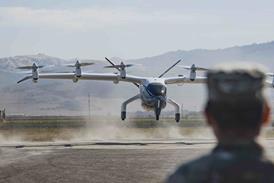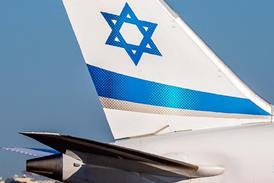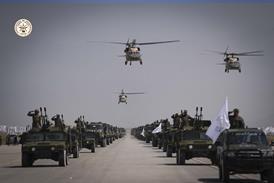Alan George/LONDON
IRAQ HAS LAUNCHED at least one long-range missile project since the end of the Gulf War, according to the latest United Nations (UN) report on efforts to dismantle Saddam Hussain's weapons of mass destruction.
The revelation is certain to put back the date for any lifting of the trade embargo which is crippling Iraq's economy. Rolf Ekeus, head of the Special Commission charged with unraveling Iraq's weapons, has warned that the evidence for a forbidden rocket project could be "a clear violation of the provisions of [UN] Resolution 687" - the 1991 cease fire resolution, which ended the Gulf War.
Ekeus' report, which is being considered by the UN Security Council, says that Iraq has admitted that, "...after the adoption of Resolution 687 it conducted a covert programme to develop and produce a surface-to-surface missile". It adds, "This missile would be capable of prohibited ranges".
UN rules permit Iraq to retain missiles with a range of up to 150km (80nm), a distance deemed sufficiently short to ensure that the rockets are used only for defensive purposes. A headache for the inspectors is that much of the technology required for short-range missiles is equally applicable for longer-range weapons.
The report says that Iraq "...carried out a number of tests with modified surface-to-air missiles for this [forbidden] project".
Western officials say that the "surface-to-air missiles" in question are probably Soviet-made SA-2s. It would not be the first time that they or their derivatives have been used in the production of ground-to-ground missiles. India's locally made Agni and Privthi missiles, both include technology based on the SA-2. Cuba has also shown interest in using a re-engined SA-2 as a ballistic missile.
Strong evidence for Iraq's continued interest in long-range missiles came in a seizure in Jordan in October of 115 gyroscopes and accelerometers, both crucial elements in missile-guidance systems. The equipment, possibly procured by middlemen in Austria, arrived in Amman on a flight from Moscow. Although Iraq has denied that it had tried to buy these components, it has since acknowledged that some of the shipment had reached Baghdad.
Well-placed sources say that the illicit equipment is for use in extremely long-range missiles, although it can also be used in medium-range weapons, giving them impressive accuracy. It remains unclear whether they were destined for the SA-2-based weapon or for another, as yet unknown, Iraqi missile project.
In his report to the Security Council, Ekeus comments: "There is evidence that this acquisition is for long-range missiles and thus further indicates continued activities in Iraq in the area of proscribed missiles."
Source: Flight International




















